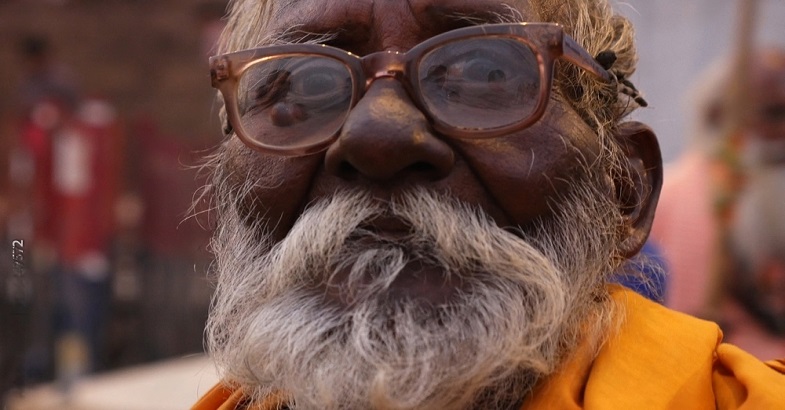
We as a nation are going gaga over the potential demographic dividend. It is true that India theoretically is in the purple patch, with its young population being rightly seen as a potential growth engine. While we celebrate the potential demographic dividend, we must not ignore the hard reality which will hit us in the next few decades. It is ‘NOW’ that we ought to bring the fundamental fact of ageing from peripherality to centrality. The newly released UNFPA, India Ageing Report 2023, reinforces that, like the world population, India is ageing faster than previously expected. The report observes that despite the predictability of population ageing, the world, including India seems ill-prepared.
India’s Ageing Challenge: Urgent Policies, Awareness Gaps Revealed
The report predicts India’s elderly population will balloon to 21% (34.7 Crore) by 2050 from its present 10.5% (14.9 Crore). The states like Himachal Pradesh and Punjab and southern states including Kerala are ahead of the rest in this demographic transition and would age early. Consequently, there would be colossal pressure to provide healthcare and rehabilitative services to meet the ageing population’s needs. Therefore, it is crunch time for governments–both centre and states as well as our society to prepare accordingly.
The UN report acknowledges the pioneering policy response by India as it refers to the National Policy on Older Persons (1999) and the National Policy for Senior Citizens (2011) landmark initiatives aimed at addressing this challenge. These policies call for an age-integrated society with a focus on promoting active ageing, social inclusion, and healthcare services, providing a holistic framework for addressing the diverse needs of senior citizens and encouraging the creation of age-friendly infrastructure and services. These policies among other things did shape a slew of old age schemes such as old age pension, free food grain, concessional fares in transportation, etc., both at the centre and state governments level.
However, the report also admits awareness and access gaps in implementing schemes formulated for senior citizens’ welfare. For instance, the awareness about the most popular Indira Gandhi Old Age Pension Scheme (IGNOAPS) is 55%, about the Indira Gandhi National Widow Pension Scheme (IGNWPS), the awareness is 44%, and only 12 % elderly are aware of the Annapurna and MWPSC Act 2007. Furthermore, the access gap is huge, with only 23% of the elderly availing of the Indira Gandhi Old Age Scheme, a mere 19% of senior citizens availing benefits under IGNWPS, and just 1 % under Annapurna Scheme. Thus, it is a reality that old age schemes and policy interventions could not be implemented in letter and spirit due to resource, knowledge, and administrative constraints, with major bottlenecks being lack of awareness, complexity, and absence of monitoring.
India’s Ageing Dilemma: Rural Challenges, Infrastructural Imperatives Unveiled
As per the UN India Ageing Report, feminisation is the characteristic feature of the ageing population globally as females have higher life expectancy than men, and India is no exception. Ruralisation of old aged population is another dimension, as 71% of the elderly reside in Indian villages. Lack of formal social support systems, presence of co-morbidities in almost 50% of senior citizens and low income of most aged citizens would be some of the key features of the ageing process in India.
Therefore, India will need a considerable financial and infrastructure effort to prepare itself for the upcoming challenge of providing care to its aged population. Governments must collaborate and engage with civil society, NGOs, and corporates to supplement/complement their efforts in creating an enabling ecosystem for the elderly. Capacity building at the ground level would be another critical element, along with the availability of finances, which would decide the fate of our elderly.
India’s healthcare infrastructure, especially in rural areas, is insufficient to meet the needs of the elderly population, the UN report substantiates the fact. Thus, a mammoth effort is needed to improve healthcare access and quality, particularly for geriatric care in the Indian countryside. It is heartening that there are case studies and best practices to get inspired from. Vayomithram scheme in Kerala and Project Urban Elder Care in Mumbai are readymade models to mimic.
It is critical now to plan infrastructural interventions such as day care and recreational facilities for elderly and old age homes, especially in urban areas, where informal social support systems are limited or absent. Despite Hon’ble Supreme Court’s orders to have old age homes in every district, governments are struggling to develop /construct old age homes at the ground level. Again, models like Pakal Veedu in Kerala- a daycare facility for the elderly are available and have also been mentioned in the UN report.
Empowering Ageing India: Social Innovations for Inclusive Support
The base of the social support schemes must be expanded by bringing more elderly within the ambit of the ongoing schemes. It is desirable to periodically augment the benefits given under various old age schemes considering inflationary pressures.
Adoption of information technology, digital literacy; and reinvention of traditional social, religious, and public places could be effective tools to mitigate the effects of unhealthy and isolated ageing. Studies show that community-based interventions are more effective on the ground. Telemedicine, telephone wellbeing helplines, social media communities, etc., would be welcome steps.
Even with the forces of urbanisation, modernisation, and globalisation impacting our Indian way of life, India, with its unique culture and associated features such as joint family structure, informal social support systems in villages and relatively high jointness even in nuclear families, is better equipped than most individual centric western societies in dealing with an ageing population.
Therefore, our adults and, more importantly, children must develop the necessary emotional quotient and continue to consider elders as part and parcel of family. This is possible through a specific curriculum under the umbrella of value and ethical education. If appropriate family values are instilled over the years in children, India will see healthy ageing of its population.
Supporting the elderly population in India requires a comprehensive approach that addresses their diverse needs, including healthcare, social, economic, and psychological aspects. A few policy interventions can be:
Creating Comprehensive Database: It is said “what can be measured, can be managed”. Creating comprehensive database on the elderly population and supporting new research initiatives in this regard is the need of the hour to aid in evidence-based policy formulation for the future.
Creating Age Friendly Environment: Creating age friendly environment, both physical and social stands to bring our senior citizens into focus again by enhancing and earmarking expenditure to build elderly care facilities such as old age shelters, elderly day care, geriatric health centres etc. Akin to concepts like Gender Budgeting, SC subplan, Elderly Budgeting may be introduced by both the centre and state governments.
Including Private Sector, NGOs in Creating Necessary Infrastructure: Lauding the efforts of private sector and NGO’s which are working in this field will go a long way in creating necessary infrastructure. Making spending on old age infrastructure as part of CSR can bring funds which governments are struggling to finance.
Recoining the Family: Government can think of changing the definition of family to include parents and grandparents, considering the uniqueness of our society. This will help in re-integration of our elderly into the social set up.
In Conclusion
It won’t be far-fetched to conclude that the elderly constitute one of the most vulnerable sections of society. Providing them with support in normal and difficult times is the responsibility of both informal and formal social support networks. We ought to build inclusive and age-friendly societies.

Author Bio: Dr. Deepika Kant is a Ph.D (Sociology of Ageing and Health). She works with the Indian School of Business as Manager, Advanced Management Programme In Public Policy and Advanced Management Programme in Healthcare.
DISCLAIMER : The views expressed in this blog/article are author’s personal.

